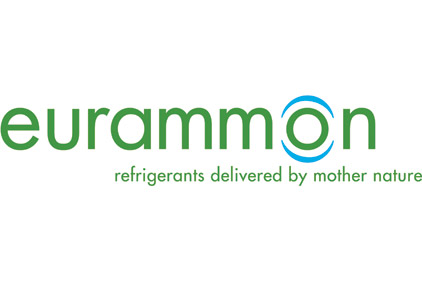That was the primary perspective of an extended report from Eurammon, a joint European initiative of companies, institutions, and individuals who advocate an increased use of natural refrigerants.
The report, titled “Climate Change and Its Significance for Refrigeration Technology,” begins by taking on the long-standing challenge of those who don’t believe that things humans do have any effect on global warming or even climate change. “Those who are convinced in doubting that climate change is man-made refer to various eras in the history of our planet where the earth has heated up or cooled down drastically even without any contribution on our part,” the report said. “In future, too, they see climate change as the result of natural causes, including, among others, a changed ellipsoid orbit of the earth around the sun.
“Climate researchers counter this by saying that the situation today is exacerbated by a not inconsiderable human contribution to greenhouse gases in the atmosphere, contributing to the fact that the earth will have warmed up by several degrees Celsius by the end of this century. The main cause of this is seen to be industrial and technological development over the last 150 years. However, at the start of this period, climate change and carbon emissions were unknown factors. They have only gradually come into the focus of public awareness, with an increasing effect since the 1960s.”
HVACR’s Role
The report then focuses on how the HVACR industry figures into Eurammon’s position, and quotes its chair Monika Witt.
“Refrigeration and air conditioning applications fight on two fronts with their contribution to global warming. On the one hand, direct emissions from refrigerants containing fluorine such as FCs and HFCs make a major contribution to the greenhouse effect. Such emissions are caused, for example, by leaks in refrigeration systems so that the refrigerant escapes into the atmosphere. On the other hand, the operation of refrigeration systems consumes a large amount of energy consumption and as such makes an additional indirect contribution to carbon emissions. Furthermore, demand for refrigeration applications is increasing. On a global scale, installed refrigeration capacity has nearly tripled since 2001.”
Political Approach
The lengthy report then looks at the political landscape, particularly the Kyoto Protocol. Kyoto came from the United Nations Framework Convention on Climate Change aimed at fighting global warming. Close to 200 nations have signed and ratified the protocol. The United States is the only country to have signed but not ratified it. The ratifiers said they will reduce greenhouse gases in their countries by certain amounts by certain deadlines. Most have not reached their promised targets. But Kyoto continues to be a major global topic as does efforts in Europe to crackdown on F-gases to an even greater extent than in the United States.
Said Eurammon, “Environmental agreements such as the international Kyoto Protocol in general or the European F-Gas Regulation in particular are dedicated to the issue of greenhouse-relevant substances and look for solutions on a political level. But it is proving extremely difficult to bring about an understanding on shared climate protection and reduction levels as well as elaborating generally binding regulations, in view of the numerous individual interests of the many states involved.
“While the international Kyoto Protocol stipulates binding reduction targets for gases such as carbon dioxide, methane, nitrous oxide, sulphur hexafluoride, and fluorinated hydrocarbons, the European F-Gas Regulation refers particularly to the latter group and their use in various installations. ‘The regulation is of special significance for the refrigeration and air conditioning sector because F-gases are used as refrigerants in refrigeration and air conditioning systems,’ ” explained Monika Witt. “To reduce emissions, it regulates for example the placing on the market of F-gases, the monitoring and maintenance of installations in order to avoid leaks, and the initial and advanced training of professionally qualified staff.”
The Eurammon report then rolls out a lot of statistics. “The European Commission published a Review Report on the effects and adequacy of the F-Gas Regulation over the last four years. It came to the conclusion that the regulation has had a quite significant effect on F-gas emissions in Europe. By the end of 2010, such emissions were verifiably reduced by 3 million tons CO2 equivalent. But this is not enough in order to reach the EU’s (European Union) long-term targets of reducing emissions by 80-95 percent in 2050 compared to 1990. Only about one-half of all emissions forecast by 2050 could be avoided altogether, and only if all 27 EU Member States were to consistently apply the current specifications from the F-Gas Regulation and the corresponding provisions for mobile air conditioning units (MAC Directive). This would mean that the emissions would only remain stable on the current level of 110 million tons CO2 equivalent. Crux of the matter: Predictions indicate that there is only very little scope for reducing emissions in the framework of applications covered by the F-Gas Regulation — in the magnitude of around 3 million tons by 2010 and around 4 million tons by 2050.”
Witt is then quoted as saying, “It is therefore not possible to reach the target simply by continuing as before. Regulations are only expedient when they are adhered. As long as F-gas consumption is not closely monitored and more important, so noncompliance is [not] fined, it is very unlikely the consumption can be reduced as planned. Stricter controls and harsher penalties for failure to comply with the requirements are therefore necessary.”
Natural Answer
The report then goes on to state its support for broader use of so-called natural refrigerants. “The objective of the F-Gas Regulation should also be to push the development of new technological innovations and alternative technologies. One alternative to F-gases in refrigeration and air conditioning systems consists of natural refrigerants such as ammonia (NH3), carbon dioxide (CO2) and hydrocarbons. In contrast to the F-gases, these refrigerants offer the advantage of having either no or only a negligible global warming potential. As a result, their contribution to the greenhouse effect is only marginal, even in the event of leaks or when disposing of the refrigerant.”
Further, “Eurammon drew attention, among others, to the high potential for reducing F-gases by using ammonia as a refrigerant, for example in stationary air conditioning systems. The initiative also emphasized the good thermodynamic properties of NH3 and hydrocarbons, also for applications in the critical temperature range.”
At this point, the report deals with energy-efficiency issues. “There is still widespread opinion that installations operating with natural refrigerants are always less efficient than those using synthetic refrigerants. This statement must be revised to the effect that solutions with natural refrigerants are at least just as efficient thanks to skillful planning and systematic installation optimization. NH3 for example is deemed to be the refrigerant with the best thermodynamic properties, making it one of the most cost- and energy-efficient refrigerants of all.
“The Eurammon chairwoman could also envisage explicit incentives when using systems with natural refrigerants as alternative technology, either in form of subsidies or tax deduction. Another proven possibility could be the penalty for refrigerants with high GWP. In September, the Australian government introduced a bill in Parliament for a CO2 tax that includes taxation on F-gas imports. In Europe, individual countries have already implemented additional measures to intensify the transition to already existing, more environment-friendly technologies. The Scandinavian countries, for example, levy an additional F-gas tax. One kilogram of R-134a costs €17.50 in tax in Denmark, €35.00 in Sweden, and even €39.00 in Norway.”
Said Witt in this regard, “It is important to come to harmonized European standards in order to support the safe use of natural refrigerants. Right now, there exist too many obstacles in certain countries.”
Publication date: 01/30/2012










